The best decluttering methods – 84 tried-and-tested methods for even the least motivated among us
From serial procrastinators to slow-living enthusiasts, there is a decluttering method to fit us all


- Everyday decluttering
- Serious clear-outs
- If you're overwhelmed
- If short on time
- To build better habits
- If you're indecisive
- For sentimentalists
- For closet clear-outs
- Fun decluttering challenges
- For procrastinators
- For busy people
- Team efforts
- For preventing clutter
- Decluttering by age
- What's the best website to sell stuff?
- What's the best charity to donate used items to?
- Can you declutter your house in one day?
There are so many decluttering methods you can try to target problem areas in your home, but how do you know which will work the best for you?
Rather than guess your way through them, the expert Solved team here at Homes & Gardens and our experienced contributing editors have spent the last few years testing every decluttering method from whole-house blitzes to viral hacks and challenges so you don't have to.
Using our in-depth insight, we compiled this easy-to-navigate library of 84 methods and decluttering tips to help you find the perfect fit, no matter if you are supremely motivated, short on time, or overwhelmed by the mess in your home.
Our Ultimate Decluttering Method Library
Some of the most valuable decluttering lessons we have learned have come from trying out each of these decluttering methods, but remember: There is no hard and fast rule.
Mix and match your favorite parts of these decluttering methods to maximize your mess-busting mega powers, or try a new method depending on what is happening in your life, how much time you have or the mental block you need to bust that clutter.
For general clutter and household tidying
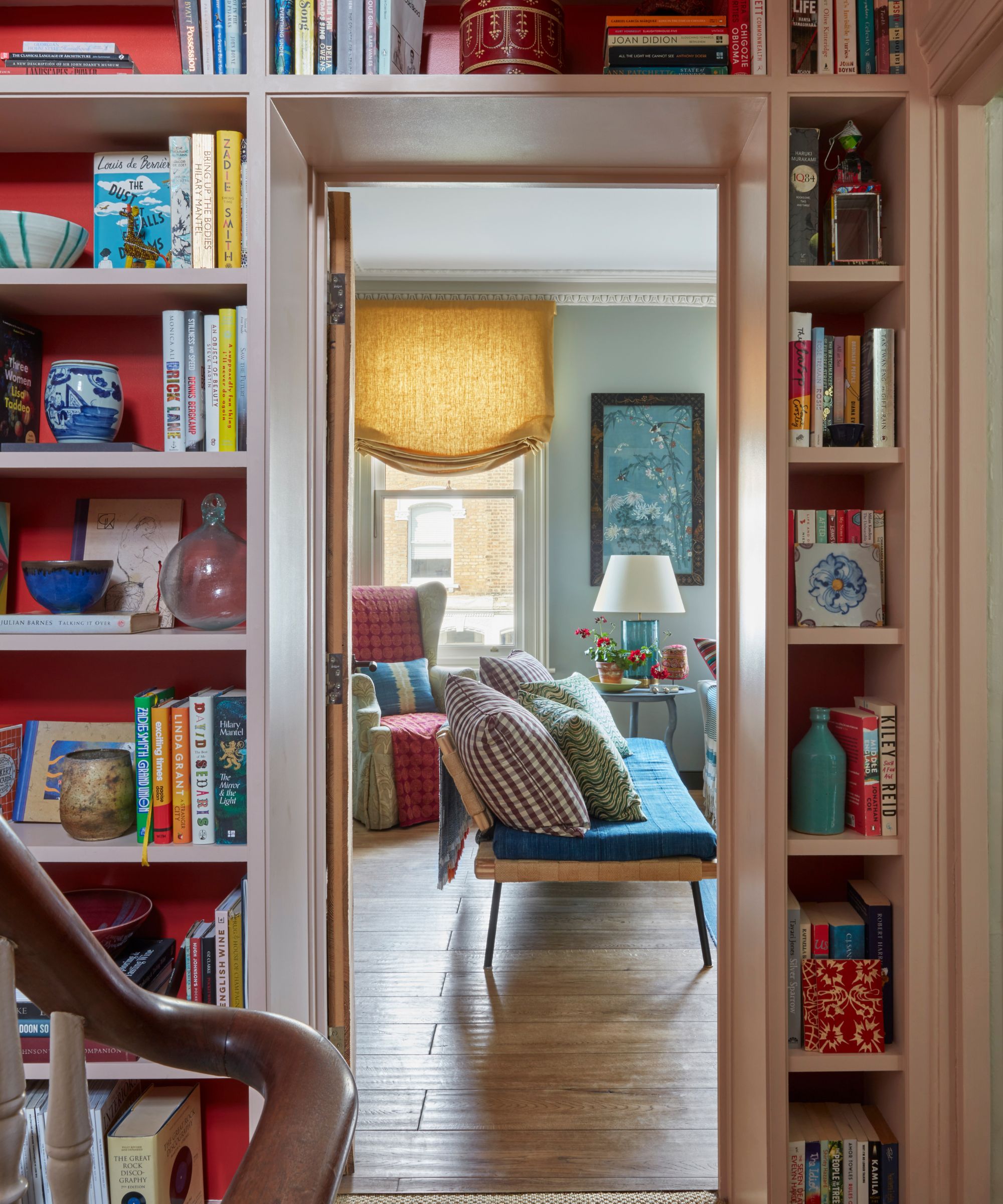
These approaches work anywhere in the home.
If you’re starting to spot the signs it's time to declutter your home, and your storage ideas need a general clear-out to stay on top of mess, these maintenance tricks, often championed in decluttering books, might be perfect for you:
- The Ski-Slope Organizing Method – This method breaks rooms down into individual zones that you can crisscross between with a basket (such as this collapsible laundry basket from Walmart) to collect clutter for rehoming. This is a great way to generally tidy up your home and dispose of general clutter without diving headfirst into a messy corner and becoming overwhelmed.
- The SIMPLE Method – SIMPLE stands for Sort, Identify, Make a home, Put in containers, Label (using a label maker, from Walmart), and Establish a routine. It makes everyday decluttering and home organizing more structured so you always achieve your goals without getting distracted.
- The Didn’t Know Method – This approach is great for clearing out cabinets and containers that have started to overflow, removing items you had forgotten you owned before they become a serious clutter problem.
- Week-by-Week Decluttering Method – If your home is starting to look a little untidy around the edges, this approach is perfect. It allows you to work on one room a week to prevent clutter from becoming a bigger problem. This Walmart weekly planner makes it easy to stay on track with your chores.
- The Pile Method – Struggling to see through the clutter to the final result? The pile method allows you to create three distinct piles, one to keep, one to get rid of, and one, maybe, to help you stay organized when sorting through a mess.
- The Four-Box Method – This streamlined approach involves setting up four containers in your workspace and making swift decisions as you touch each item.
- The ‘no-more-than-4’ Rule – This simple decluttering rule dictates that you should have no more than four items on any visible surface, helping to reduce visual clutter and create more streamlined organizing systems throughout your home.
- Great-Over-Good Decluttering – Rather than keeping several items that do a ‘good enough job’, this method encourages you to find single items that do several tasks perfectly, cutting down on useless duplicates.
- The Buy Again Test – This simple test asks if you would buy a certain item again, assessing its usefulness and aesthetics in your present routine. If the answer is no, declutter it.
- 3-Box Decluttering Method – Tired of decluttering being messy? This three-box method creates defined categories to stop messy piles, leaving you feeling more overwhelmed than when you started.
Serious clear-outs
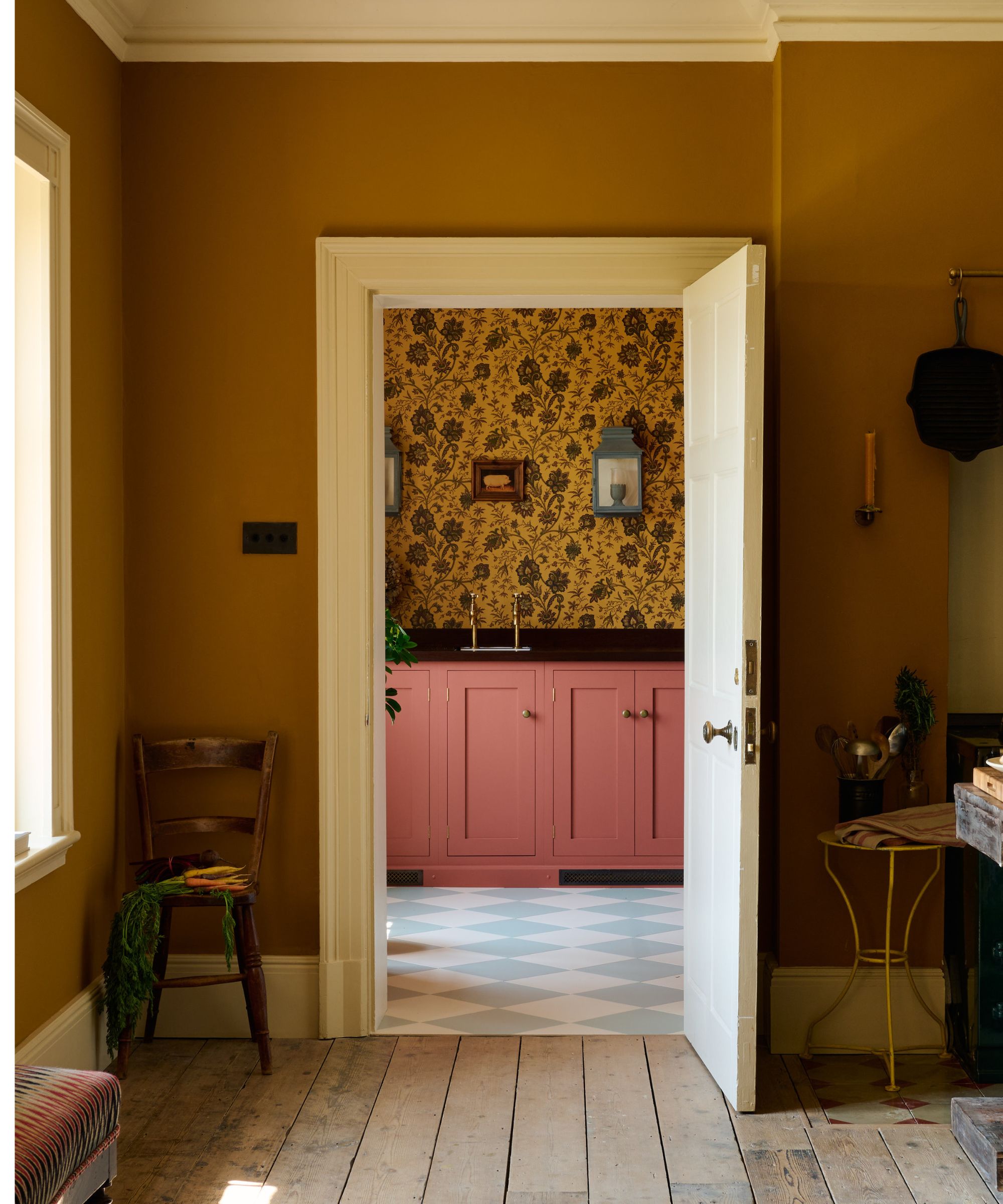
Tackle a large amount of stuff in one go with these solutions.
If you are particularly motivated to declutter and decide you need to be more ruthless when decluttering and want to cut back on a lot of clutter quickly, these structured approaches might be a good place to start – especially if you are decluttering to downsize, or want to encourage minimalism at home.
Design expertise in your inbox – from inspiring decorating ideas and beautiful celebrity homes to practical gardening advice and shopping round-ups.
- Minimalist’s Packing Party Method – This extreme decluttering approach entails packing everything you own into boxes as if you were moving, and only unpacking items as you use them. Anything left in packing boxes, available at Walmart, after three weeks or more has to go.
- One Bag-a-Day Decluttering Method – If you need to clear out a lot of clutter but can’t sit down and do it in one chunk, the one-bag-a-day method might work for you. The clue is in the name, you fill up one bag every day with clutter and get rid of it until you can no longer fill bags up. Using small trash bags from Walmart makes it easier to fill them up.
- The Move-Out Decluttering Method – Reminiscent of the ‘spark joy’ method, this approach asks ‘If you were to move to your dream home tomorrow, what would you take with you?’ anything you wouldn't take should be decluttered
- The ‘Out In The Open’ Rule – The opposite of the Packing Party Method, this approach requires you to pull everything you own out of storage and leave it lying around where you can see it. It forces you to put everything back, questioning if you use them or need them as you go. Nothing can be hidden away or ignored with this approach.
- The C.H.A.O.S Method – Like the Out In The Open rule, the CHAOS method requires you to take everyone out of your target area and embrace the chaos of decluttering. There are no worries about decluttering without making a mess, here. Simply get everything in the open so you can asses everything in one glance.
- The 30-Day Minimalism Game – If you want to set yourself a challenge to feel motivated, this is a great approach. You get rid of a number of items equal to the day of the challenge you are on. For example, on day one, you get rid of one thing. On day 12, you get rid of 12 things, all the way up to day 30, when you get rid of 30 things.
- Swedish Death Cleaning – This morbid-sounding method works on the idea that, when you pass, your friends and family will have to deal with your clutter. It is designed to help you cut back on what you own to make your family's lives easier in the future and improve your life in the present.
- Norwegian Life Cleaning – Similar to Swedish death cleaning, this Norwegian method forces you to face the hard questions, such as ‘Do you want your family to be burdened with your stuff when you pass?’
- The Clutter Coffin Approach – rather than hiding all your items in boxes and baskets, this approach changes how you see storage. Each box is now a ‘coffin’ where clutter goes to die, and your job is to clear them all out.
- The Suitcase Method – If you had to leave, and could only take one suitcase of things, what would make the cut? This imaginative approach forces you to consider the true meaning of objects to help you decide what to keep and what to let go.
For people who are easily overwhelmed

Avoid extra stress with these more mindful decluttering approaches.
On the other end of the spectrum, if you find that you are always decluttering when you feel overwhelmed, these methods help to break things down into more manageable, stress-free chunks to help you regain some control over clutter while reducing mental load.
- The Reverse Advent Calendar – While this originated as a holiday decluttering hack, it can be repurposed and used any time of the year. While you would usually open a door every day for one month and gain an item or chocolate, you get rid of one item every day of the month, keeping the task concise to avoid overwhelm.
- The CORE 4 Method – Breaking decluttering down into clearing, categorizing, cutting out, and containing helps to take some of the mental work out of decluttering, making it a little less stressful.
- Three-Second Decluttering Rule - This gentle decluttering method gives you more leeway on what to keep when decluttering. If it is not an immediate ‘no’, the item gets to stay.
- The Five Messes Method – If you struggle to work out what to declutter, this method can help. It breaks everything down into five types of mess, from trash to items with and without homes, to help you make more straightforward decisions about what to do with it all. This set of five woven baskets from Amazon makes this process even simpler.
- Hushing the House – If you are easily overwhelmed by visual clutter, this method is for you. It helps you mindfully remove items that stress you out for a more relaxing home.
- The 1-3-5 Method – if you need to get a lot done in a small amount of time, the 1-3-5 decluttering method helps you focus on one big task, three medium tasks, and five tiny tasks to help you feel accomplished without gutting your whole home.
- The Organizing Triangle – This decluttering method relies on three simple principles: that everything should have a home, similar items should be grouped, and for every thing you add, you should take one away, helping to streamline the decluttering and organizing process.
- Inyo-Onyo – defined as 'empty space' this decluttering method makes you think about the beauty of the empty space you will create by decluttering, rather than the stress of getting rid of items, for a calming mindset shift to make decluttering less overwhelming.
- Post-It Note decluttering method – The Post-It Note decluttering method is perfect for people who need a visual guide to help them sort between piles of items. Use one color for items you want to keep, another for the no’s, and another for maybe. It allows you to assess each item individually without making massive messy piles that get mixed up.
- The Reverse Decluttering Method – The reverse decluttering method flips the question ‘what should I get rid of’ to ‘what do I want to keep’. Moving from the negative to the positive can make the process feel far less overwhelming.
- Decluttering with health challenges – Overwhelm isn't always emotional. Physical health challenges can become a barrier to streamlining your home without a fatigue, pain or health flare. However, you can declutter with adaptive pacing principles in place.
For quick clean-ups
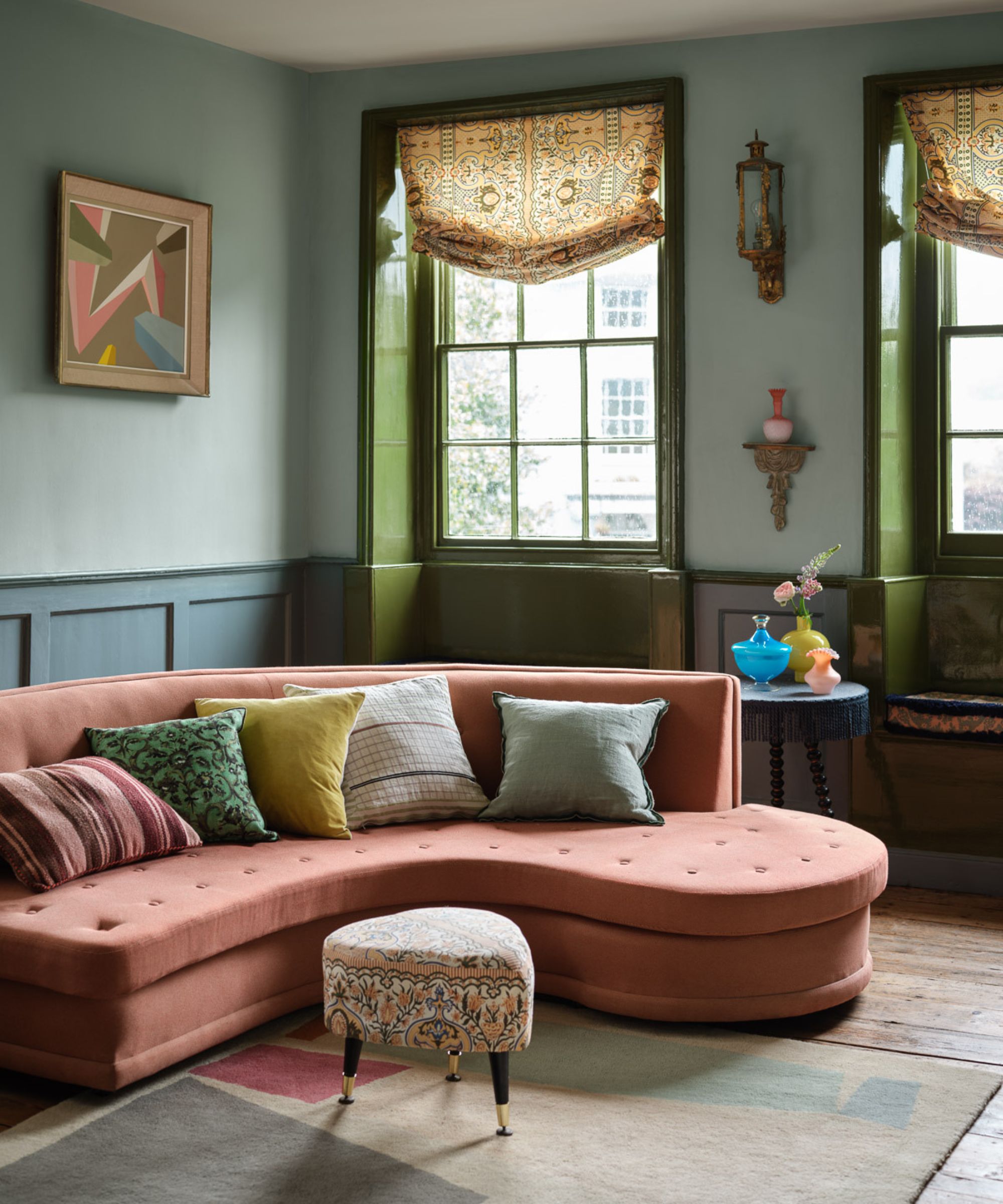
If you only have a few minutes spare, try these rapid fire approaches.
Whether you are looking to declutter clothes fast, or quickly want to blitz a few areas of your home before guests arrive, these quick decluttering methods will help you refresh your space without eating into your free time.
- The Boundary Method – This decluttering method sets clear boundaries for storing items. Anything that doesn’t fit has to go, making it ideal for organizing storage containers or organizing drawers, especially when paired with good adjustable drawer dividers, available at Amazon.
- Micro-decluttering – If you only have 10 minutes but want to tackle a key problem area, try micro-decluttering. You focus on one very specific area, such as one drawer of your nightstand or just the bathroom vanity, to reduce clutter in key spots and make everyday life easier.
- Accumulation decluttering – If you feel like your home is always cluttered, it might be because of common ‘accumulation’ pieces. This decluttering method focuses on clearing out all those things collecting dust to cut back common categories to prevent mess building again in the future.
- The Fork Decluttering Method – This quick decluttering method involves assessing items based on their usefulness and decluttering the less practical versions.
For people who want to build better habits
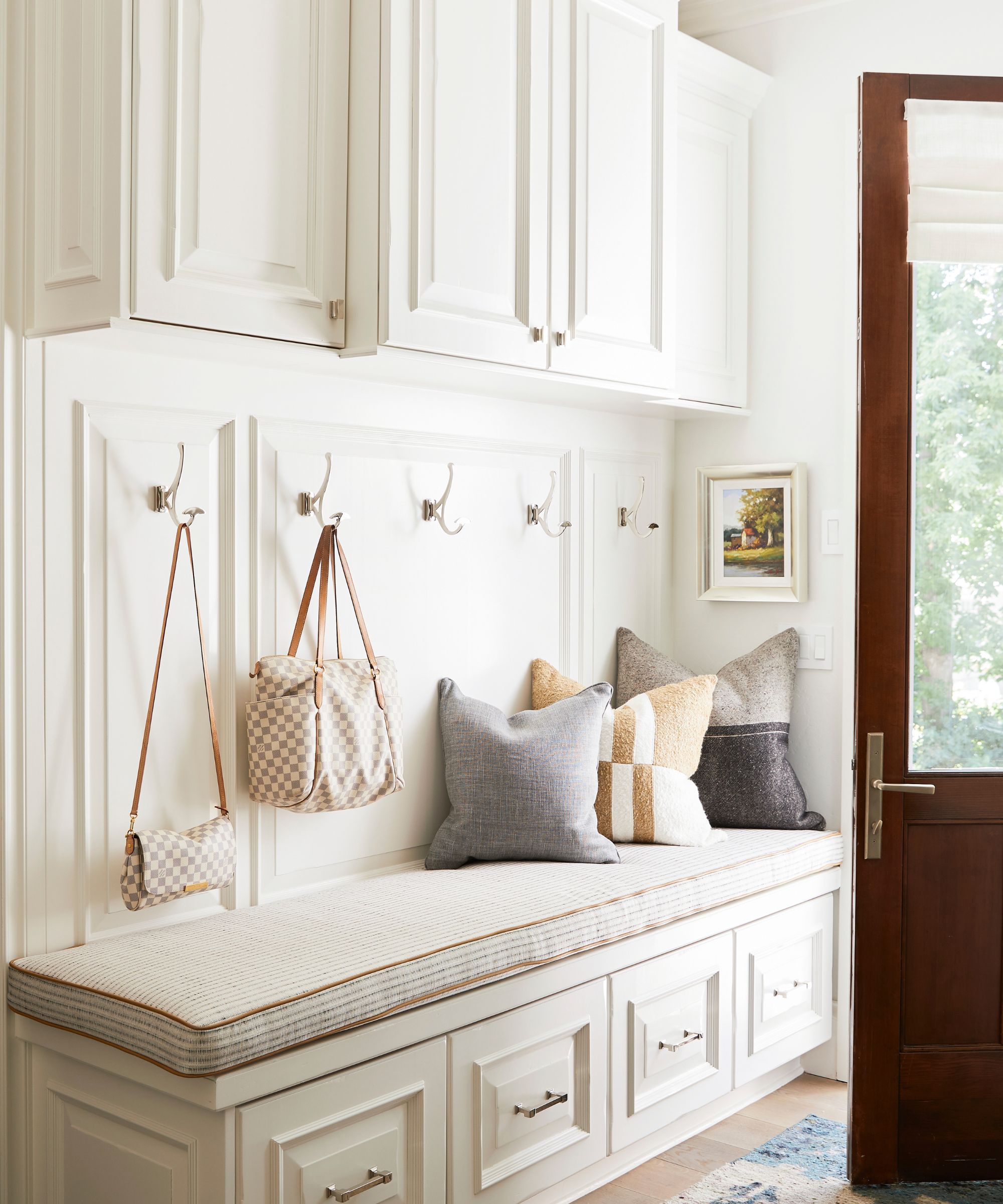
Prevent clutter in the future with these lasting tricks.
These easy habits to keep your home clutter-free can help you break bad habit cycles for an overall tidier home.
- One-In-One-Out Method – Another self-explanatory decluttering method, every time you add one item to your home, you get rid of another to keep your belongings at a constant level. Keep a lidded basket, like this one from Walmart, near your door to keep outgoing clutter tidy, but out of the way.
- The One-In Ten-Out decluttering rule – A more extreme version of the decluttering method above, you bring one item in and get rid of 10 items. They only have to be small to help you reach your targets.
- Dopamine Decluttering Method – If you want to improve your relationship with decluttering to make it a task you enjoy, start thinking more mindfully. This method involves setting achievable goals and incorporating rewards to build positive associations with decluttering.
- The Mailbox Decluttering Trick – If you like online shopping, this is a good habit for you. Every time a package arrives with items for your home, unpack them and keep the box. Then, fill that package box up with items to declutter to stop clutter before it builds.
- The Friday 30 – To stay on top of clutter, consider spending just 30 minutes every Friday whizzing through some light decluttering and organizing, putting your home in order for the weekend without taking up hours of your day.
- Incremental Improvement System – This slower approach to decluttering involves making small enhancements in order to make long-term change. This means decluttering just one section of a room or home at a time.
- The Caterpillar Decuttering Method – This habit-focused decluttering approach encourages you to alter how you use your home and the items in it to get rid of and prevent clutter. ‘The goal isn’t simply to “get rid” of things, but to let go of patterns, roles, and identities that no longer serve who we are becoming.'
- La Limpia – This Mexican ritual offers physical, mental, and spiritual cleaning designed to refresh the energy of your home through decluttering items that no longer serve you.
For indecisive people
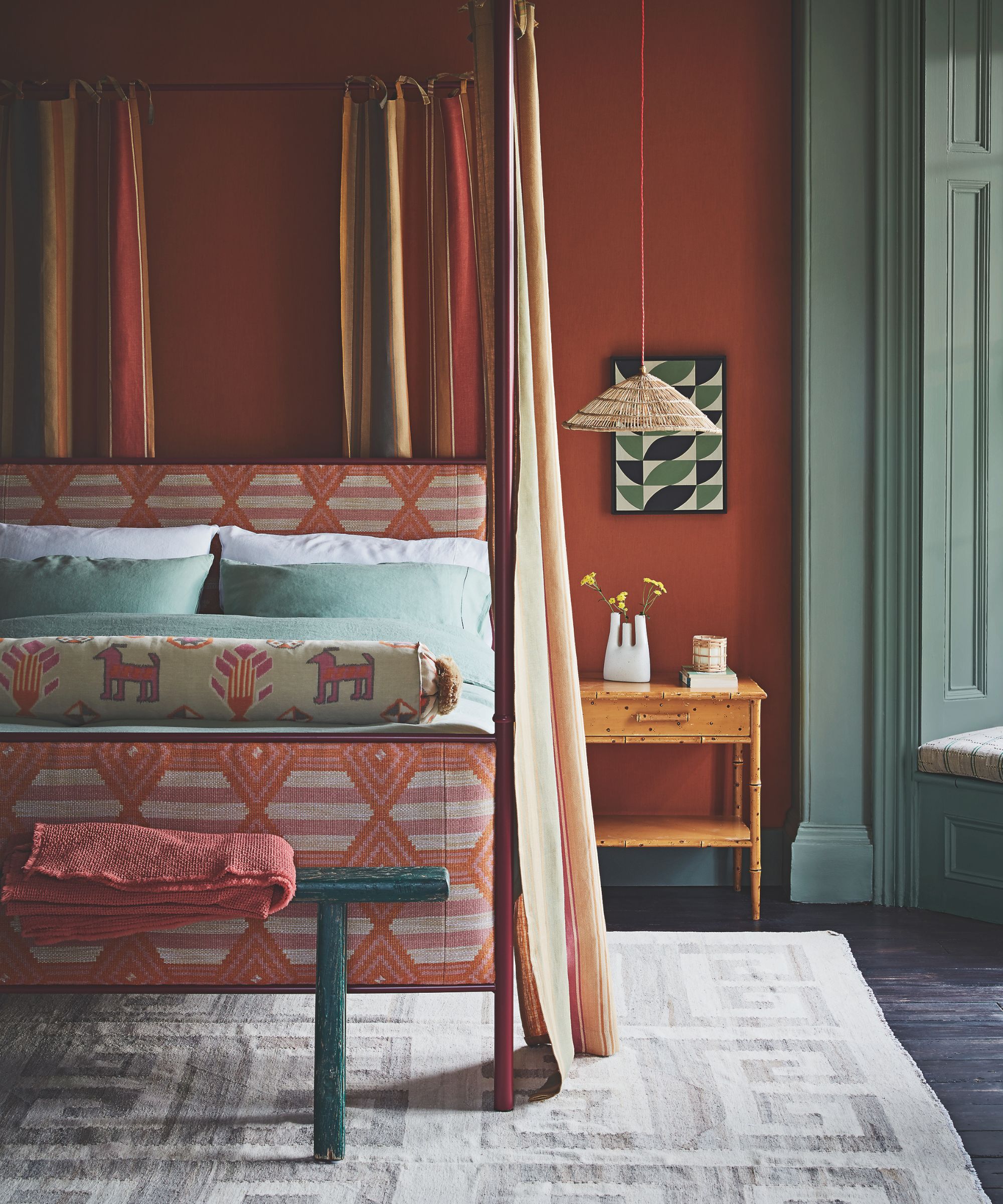
Don't let decision paralysis hold you back when tackling mess with one the best decluttering methods we've tried and tested
For those of us who struggle making decisions – especially in high-pressure situations – these decluttering methods can help to make letting go of stuff easier so you can avoid decluttering regret.
- The Outbox Decluttering Method – If you always keep items ‘just in case’, you might like an outbox. For this decluttering method, you keep a box somewhere tidy in your home and put items you are unsure about keeping. If you have not thought about the item or used the item in one month, then it is a good sign that you can declutter it without regret.
- 90/90 Decluttering Rule – For this method, you ask if you have used an item in the last 90 days, or if you see yourself using the item in the next 90 days. If the answer is no, you can part with it.
- 20/20 Decluttering Rule – For a more compact version of the 90/90 decluttering method, the 20/20 rule dictates that if you have an item you are unsure about, but it costs under $20 and you could replace it in under 20 minutes, you should declutter it.
- Sparking Joy Approach – Otherwise known as The KonMari Method. One of the most widely recognized decluttering methods, the KonMari method from New York Times bestselling Marie Kondo, requires you to assess items based on whether they spark joy (make you feel good) or not. If it sparks joy, keep it. If it does not, get rid!
- Didn't Know Decluttering Method – If you suffer guilt about getting rid of stuff you spent money on, this is the one for you. The simple rule is: if you didn't know you had something, or forgot you had it, get rid of it. Using this one parameter for keeping or getting rid of items makes decluttering any drawer, storage box, or space a breeze.
- Mottainai – This decluttering method focuses on reducing waste and reusing what you can around your home, limiting what you get rid of in favor of being more mindful about your consumption.
- Value-Based Decluttering – Instead of tossing out items you think you should be getting rid of, assess each item by how it fits into your personal values. For example, if you value personal touches, don’t declutter all of your personal photos. If you value simplicity, declutter anything that gets in the way of your perfect morning routine, etc.
- The Toddler Decluttering Method – If you find it hard to make decisions when decluttering, this method may help. It involves picking up two similar items and asking which one you like best, and letting the other go.
- Expiry Decluttering – This method applies ‘expiry’ dates to non-food items such as clothes and decor. If, after a set amount of time, you haven’t reached for the boxed-up items, declutter them.
- Personifying Possessions – If you feel guilty about getting rid of stuff, consider assigning each item its own wishes and desires. For example, imagining that sweater you don’t wear has a desire to keep someone warm and cozy can help to encourage you to donate it to someone who will get better use of it without feeling bad.
For sentimentalists
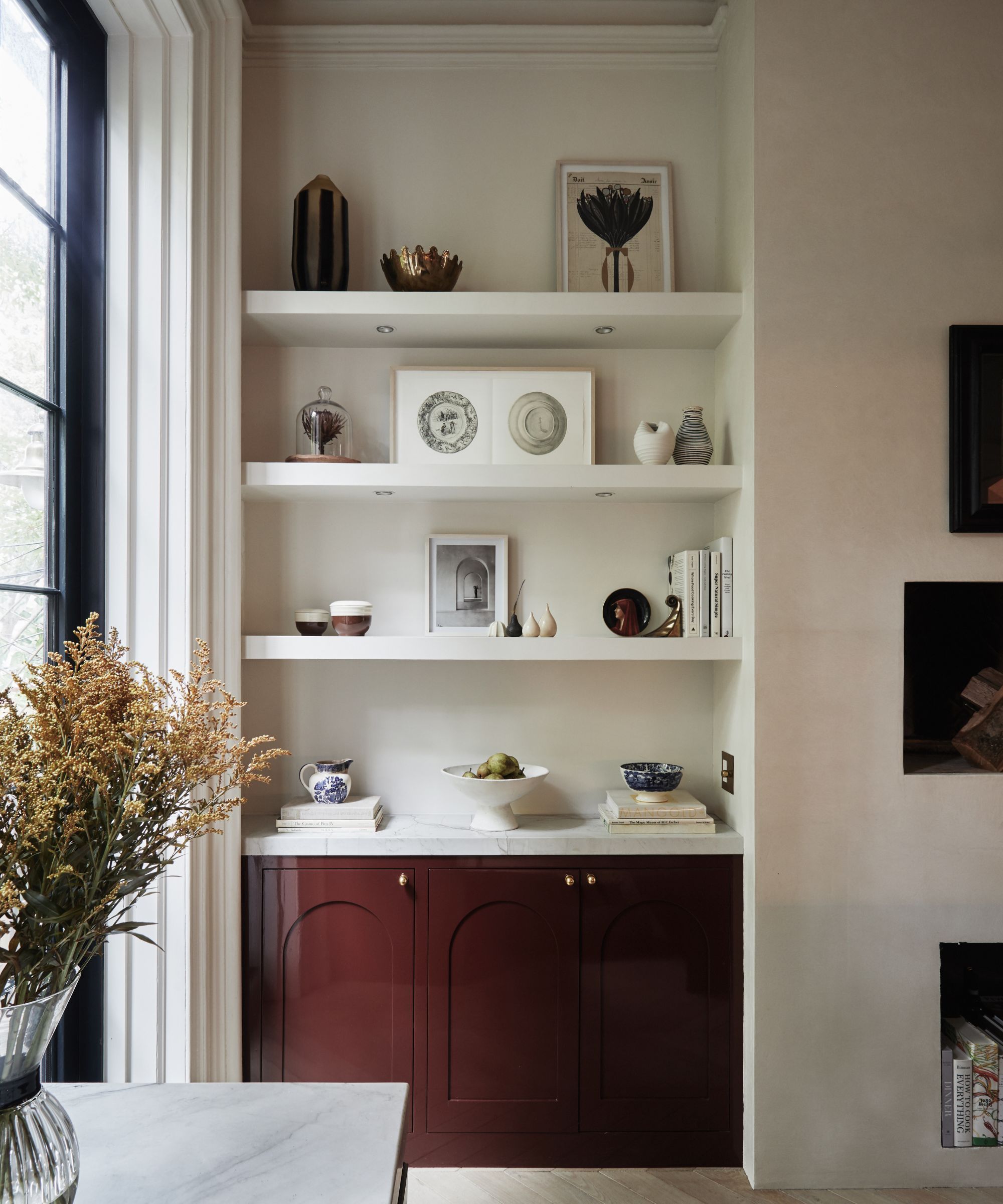
Don't neglect sentimental items. face them head-on with these tailored approaches.
Decluttering sentimental items is difficult, and you don't have to get rid of everything. However, these simple methods can prevent negative clutter from getting in the way of progress.
- Lessting – Struggle to declutter sentimental items? ‘Lessting’ is a lifestyle trend that’s all about making space by prioritizing simplicity, especially in later life. It draws on the crucial aim of decluttering, but focuses on the mindset shift of lightening your home’s load to make the future easier.
- Discharge Decluttering – Perfect for sentimentalists, this decluttering method encourages people to display their prized items, live with them for a while, and then decide if they want to keep them. It makes streamlining decisions far easier for tougher objects.
For closet clear-outs
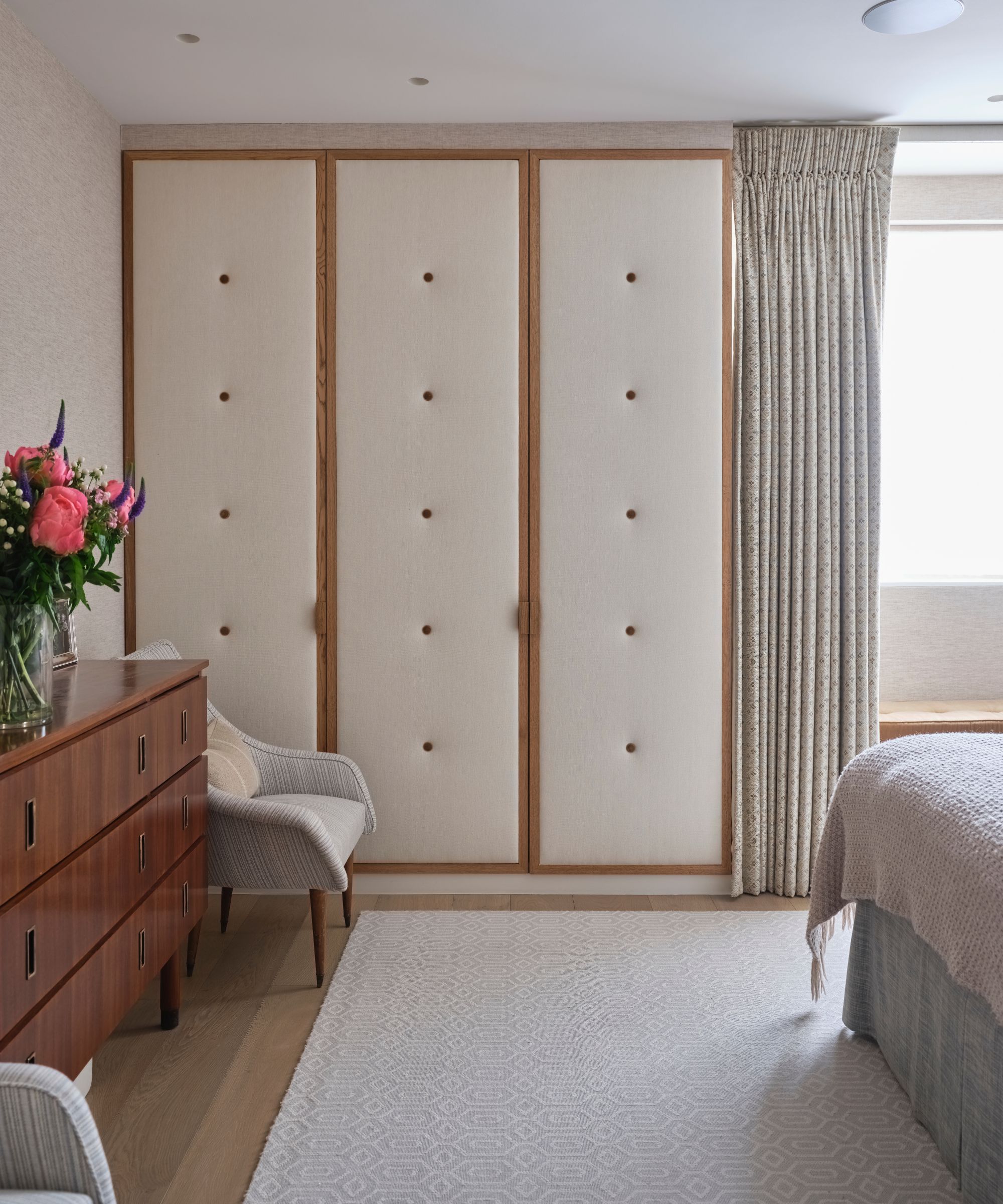
Clothes are their own beast when it comes to decluttering methods. Here's how to tackle them for good.
Closet decluttering is a very specific type of decluttering that can leave a lot of people feeling down or overwhelmed. These approaches are specifically designed to help you tackle your clothes without any of the dread.
- Capsule Decluttering Method – When you are struggling with clothes that you never wear, try this method. It dictates that you should only keep or buy a garment if it can be worn in at least three outfits to help keep your closet functional.
- Project 333 – If you want to try a minimalist closet, this challenge is for you. The idea is you live with only 33 items for three months. The rest of your clothing is stored away. At the end of the three months, assess what you used, and what collected dust, and what you missed from storage. This will help you make wiser decisions about what to declutter and what to buy in the future.
For people who want to make decluttering fun
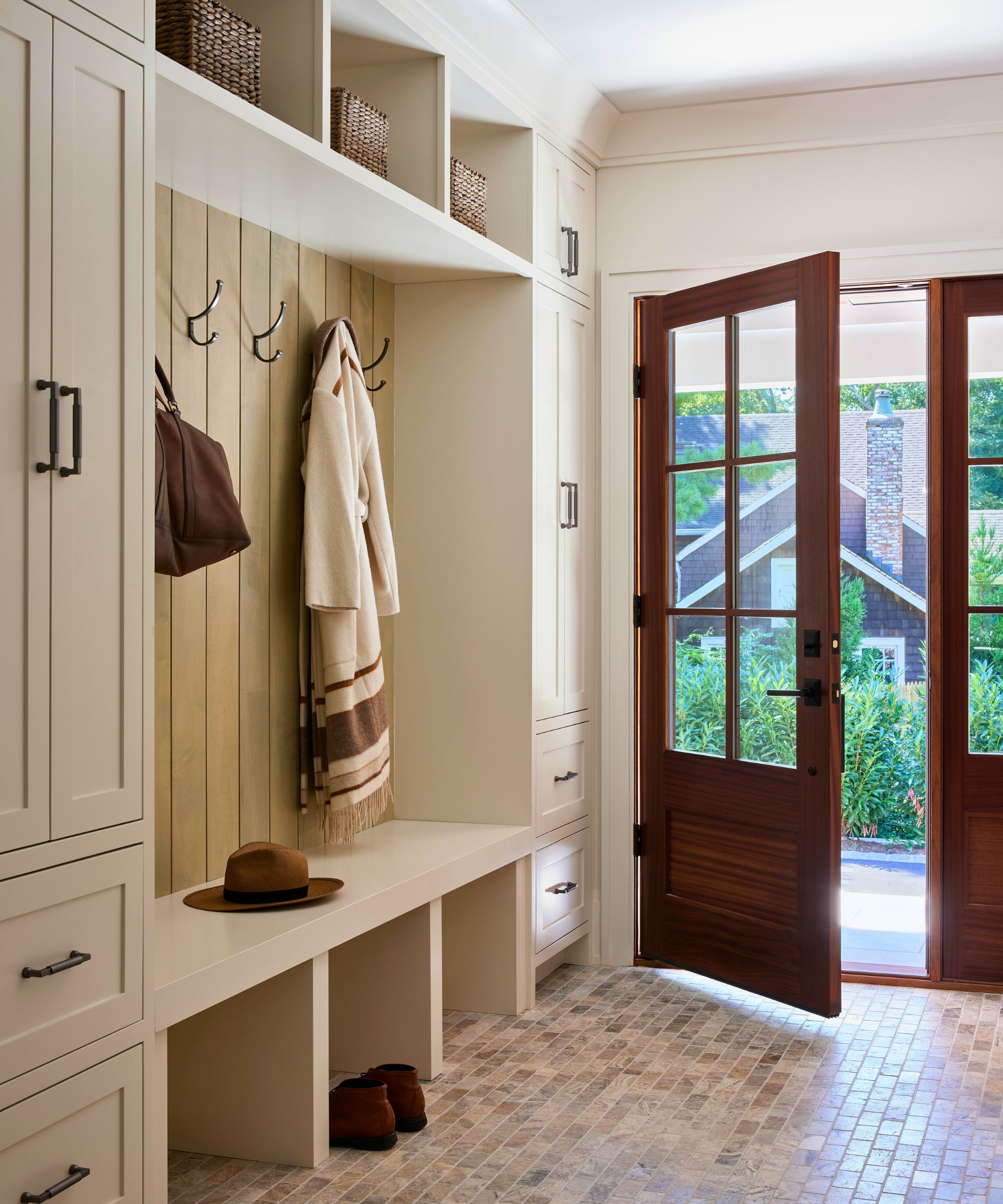
Making it fun can reduce stress and make the task more productive.
Not all chores have to feel, well, like a chore. There are some great ways to make decluttering fun and take some of the pressure off this usually stressful task. It can even help encourage your family to declutter, too.
- Scavenger Hunt Decluttering – For this decluttering method, you make a list of categories you need to cut down on, and hunt around your home for items to fulfill these requirements. This is a great approach to get children into decluttering, especially if you incorporate rewards.
- The Temptation Method – If you hate decluttering, use the Temptation method to pair the task with one you do enjoy. For example, pair decluttering with listening to your favorite podcast or music, or even your favorite snacks and drinks, to make the task more appealing.
Perfect for procrastinators
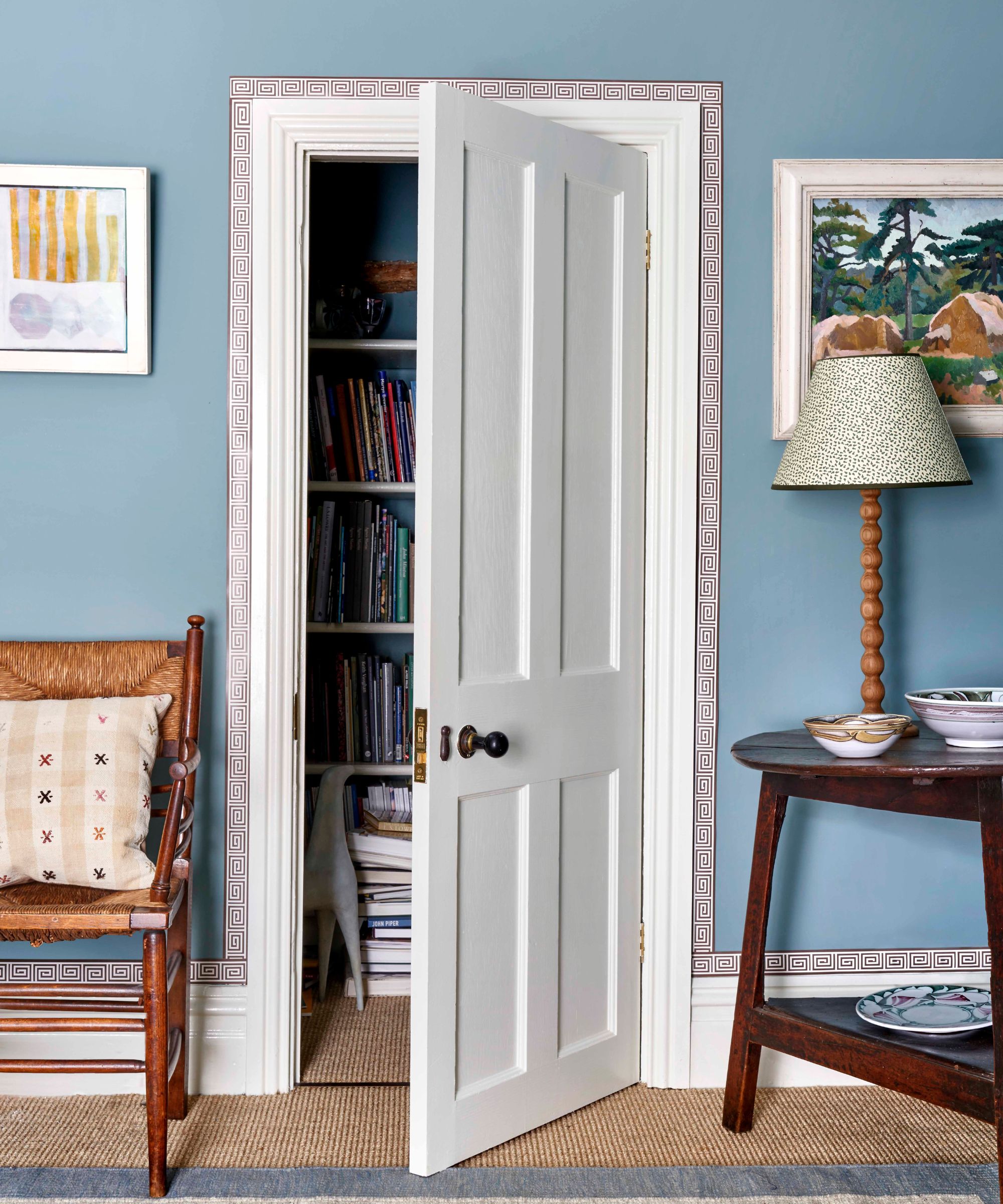
Don't just shove everything to one side or hide it in a closet.
If you are prone to procrastination and need to make your to-do list less overwhelming you are not alone. Professional organizers have come up with several approaches designed specifically to make decluttering a bit easier so you can declutter your space without too much mental effort.
- 10-10-10 Decluttering Challenge – This simple decluttering method suggests that you spend just 10 minutes in 10 places around your home, clearing at least 10 items from each space. This takes away the idea that you have to completely gut a room to be successful at streamlining, to help motivate you.
- The Snowball Decluttering Method – If you are motivated by seeing your own progress, this approach will be a winner. You start small, making a note of each of your successes. This way, you can physically see how far you have come, helping motivate you to work up to bigger spaces, like a snowball rolling down a hill and getting bigger as it goes.
- 12-12-12 Decluttering Challenge – Another hunting-like game, you find 12 items to donate, 12 items to throw out, and 12 items to return to their proper home, helping you quickly tidy up your space but with a feel-good twist.
- The One-Touch Rule – To avoid a build-up of clutter, try the one-touch rule. The idea is that you should only touch an item once for it to return to its proper home. For example, when you come home, you always hang your coat up on the hook, rather than leave it on a chair, as that would then require a second touch to put it away. It helps fight off procrastination at the source.
- The KanBan Organizing Method – If you need a visual reminder of your tasks, the KanBan approach might be for you. You create a board with three categories: To do, in progress, and completed. From there, it is self-explanatory. Pick some tasks to do and move them across the board as you work on them. Similar to the snowball method, it can act as great motivation.
- The Desire Path Method – If you want to tidy as you go but struggle to build the habit, consider using the Desire Path decluttering method to place organization in the path of your chaos to catch clutter as you go.
- Visual Clues Trick – If you forget tasks regularly, using a Post-It note as a visual cue can help you stay on top of decluttering, especially for enclosed spaces like cabinets.
- The SPOT Method – If you are a persistent procrastinator, this SPOT method can increase focus. It stands for Select, Purge, Organize, and Tidy, and forces you to complete just one area of your home in one sitting to help you feel more accomplished.
For people who are always too busy
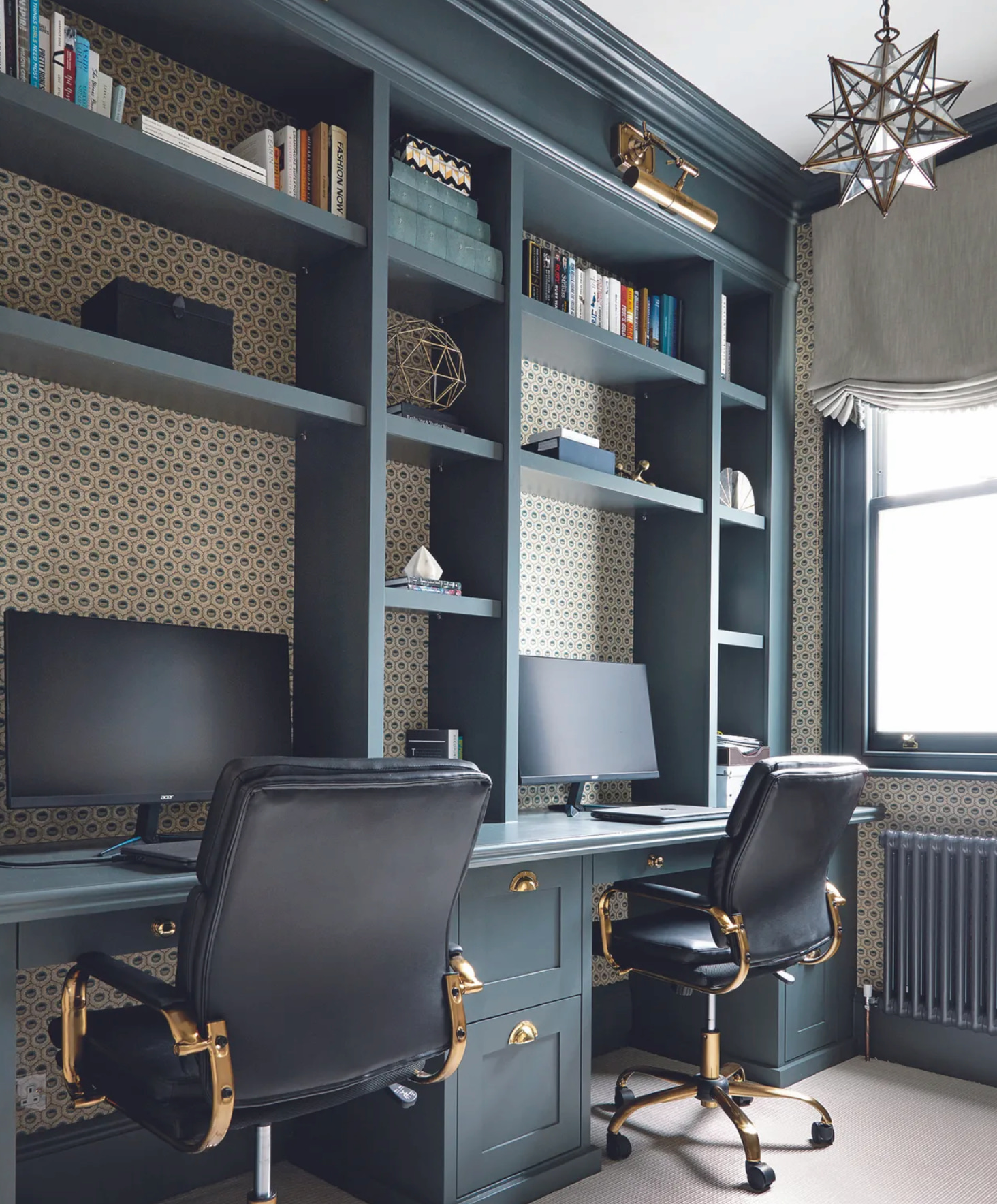
Always rushed off your feet? These methods can work decluttering into your existing schedule.
If you are constantly juggling cleaning your house when you’re too busy or feel like you are losing control of clutter, do not despair. There are plenty of ways you can regain control without it affecting the rest of your busy schedule.
- 7-Day Declutter Challenge – This is a very intense approach to organizing, but helps those who are struggling to make time for a slow decluttering project. You declutter every day for seven days, for as long as you can afford – be it five minutes, or an hour. Create a plan and breeze through as much as you can in your allocated time to get everything done in a week.
- The Decluttering Burst Method – If you don't have time to work on decluttering every day for a week, cut it down to one day and do a decluttering burst. The original goal of this method is to get rid of 100 things in one hour, but whatever you can clear out in 60 minutes is a win.
- The 5-Minute Cleaning Challenge – If your busy lifestyle gives way to doom piles of clutter around your home, the five-minute challenge is a good way to tackle them. Again, it’s self-explanatory – spend five minutes a day focusing on one problem area to gradually improve your life at home.
- The 5S Decluttering Approach – Designed to improve your efficiency, the five S’s stand for: Sort, Set, Shine, Standardize, and Sustain. It helps you to combine decluttering, cleaning, and organizing into one task to help save you time.
- 'Today's Top Three' – This approach is perfect for tackling a few chores a day to avoid them building up. The tasks can be as big as decluttering a closet, or as small as decluttering the junk drawer, so long as you get three done a day. After that, your free time is all yours.
- Pick Up and Place – Decluttering doesn't have to take up hours. You can tidy and declutter as you go about your daily activities by picking up one item you need to declutter from a room every time you leave it, putting it back where it belongs, or by the front door for donation as you head off to complete other tasks.
- The 5-second rule – If decision-making takes up most of your decluttering time, consider trying the five-second rule, forcing yourself to make a decision about an item in under five seconds and goign with your gut to make decluttering quicker.
- Category Consolidation – Tackle clutter one category at a time to make the task more manageable, rather than try and fail a whole house decluttering challenge. Plus, it helps to eliminate duplicates and make your home more organized.
- 30-day Decluttering Blitz – Need to tackle a lot of stuff in a relatively short amount of time? This 30 challenge puts a focus on each vital room and category individually, allowing you to stay hyper-focused while achieving your goals.
- La Bella Figura – This decluttering method puts aesthetics at the forefront, so that your home is always well-presented, ready to welcome a guest even at the last minute.
When working as a team
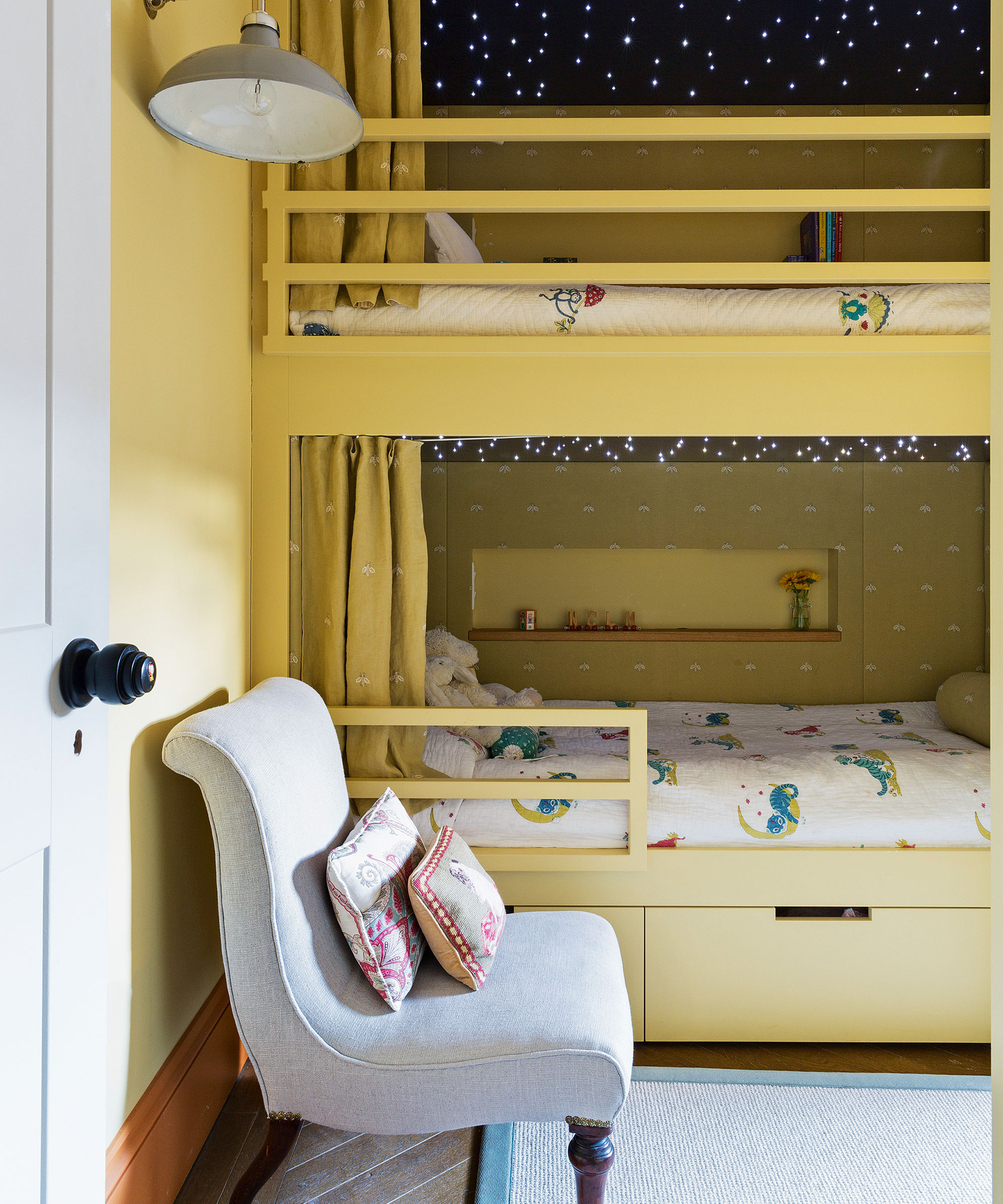
These teamwork approaches work amazingly when decluttering with children and partners.
Whether you are decluttering kids rooms or simply want to lighten your to-do list, bringing your family or housemates together to tackle chores can make decluttering less isolating.
- Städdag Swedish Method – This teamwork approach rallies your household together to tackle chores such as decluttering simultaneously, creating equal responsibility while bonding.
- The German ‘Kehrwoche' Tradition – This communal approach to chores spreads tasks out evenly among household members, following the German tradition of a ‘sweeping week’, designed to clear out the old and refresh communal spaces together.
- Family Bonding – Decluttering does not need to be a lonely task. You can get your family involved in the process to help clear clutter more efficiently and teach others (especially children) the value of clearing clutter and organizing a home.
For preventing clutter

Keep your home clutter free in the first place to make decluttering easier.
Sometimes, the best way to deal with clutter is to stop clutter before it starts. These decluttering methods do exactly that.
- The ETC Method – ETC, or Edit The Cart, is a process of preventing clutter before it builds, prompting you to ask yourself four important questions before you purchase anything to ensure it will serve a purpose in your home besides collecting dust.
Decluttering by age
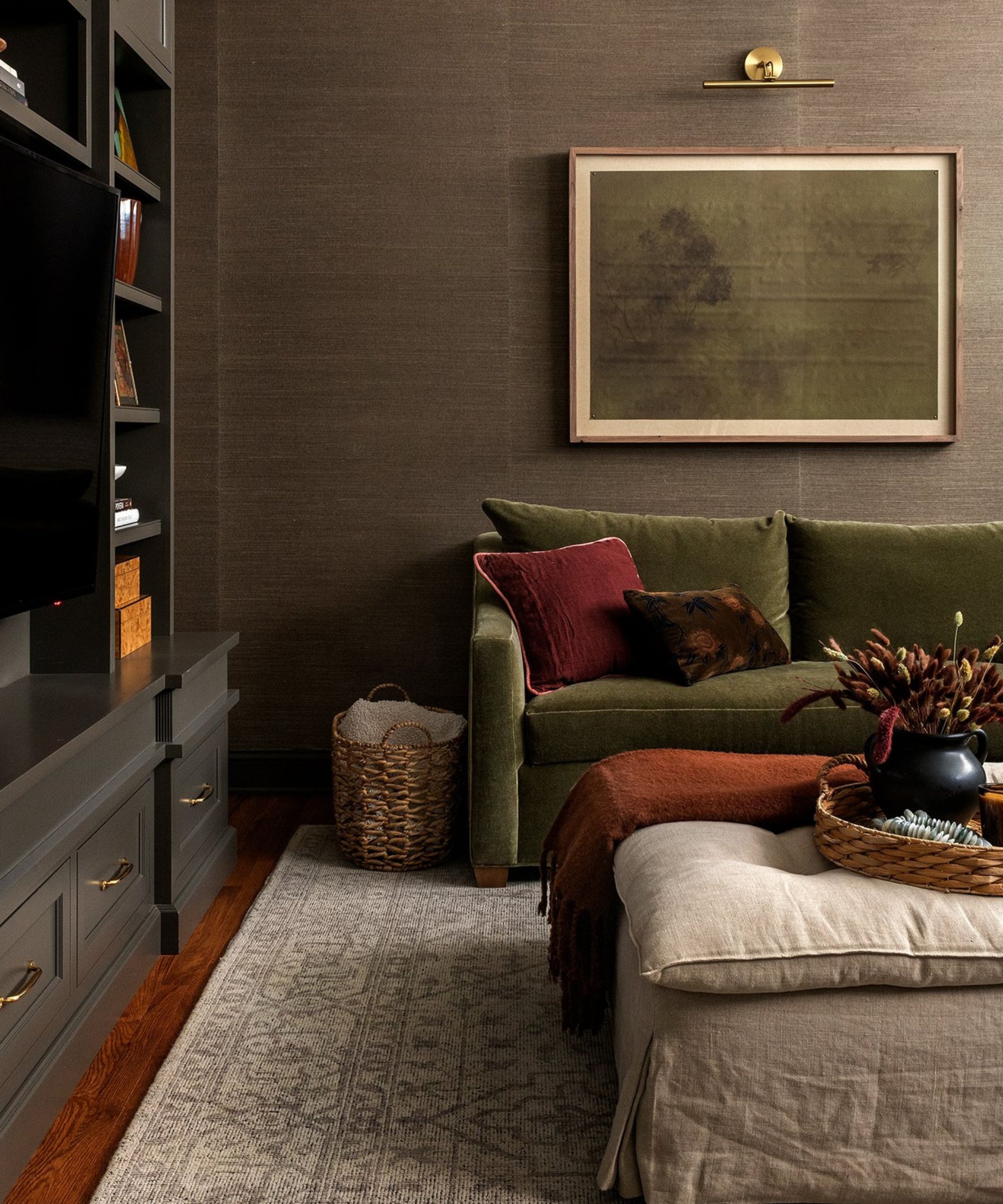
Decluttering by age allows you to focus on items you may have previously passed over.
Decluttering at major milestones can reinforce the idea of a fresh start. These age-related decluttering categories are perfect for entering your next decade with a sense of accomplishment and peace of mind.
- Things to declutter at 40 – Our head of Solved, Punteha van Terheyden shares the five things she decluttered when she turned 40 to inspire your own clear outs.
- Things to declutter at 50 – A professional home organizer reveals the four things she targeted at 50 to free up space in her home.
- Things to declutter at 60 – Museum curator Lorilee gives a masterclass in picking what to keep and what to let go of when you reach 60.
FAQs
What's the best website to sell stuff?
Selling items is a good way to ensure they get another life, reducing waste while putting a little extra money in your pocket. There are several online marketplaces for this, with one of the largest being eBay. For more local sales, consider platforms such as Facebook Marketplace or Poshmark, and Depop for clothing.
When selling online, be wary of handing out your address freely, and do not meet with strangers alone.
What's the best charity to donate used items to?
There are several charities you can donate items to, depending on the type of item.
Some of the top charities for good quality clothing and household items include The Salvation Army, Habitat for Humanity, Goodwill, and The Furniture Bank Network, all of which can offer curbside pickup for larger items.
For items like old towels and pet supplies that are still in good condition, animal shelters and zoos are usually very thankful.
Old but still usable art supplies are great for schools and children's clubs.
Remember when donating to only donate items that you would be happy to use yourself. Donating anything that is falling apart or not fit for purpose is insulting.
Can you declutter your house in one day?
It is certainly possible to declutter a whole house in one day, but it is generally not advised.
Decluttering is a mammoth task that requires a lot of time and energy and trying to race around a whole home in one day can quickly lead to burn out, resulting in poor decision-making or feeling overwhelmed when decluttering.
It is far better to break it down into different days, or weeks if you have the time, or endeavour to declutter your house in bursts over a longer period.
Once you have picked your perfect decluttering method, all that’s left to do is work out what to do with the items you are decluttering and negotiate any decluttering mistakes to improve your efficiency and declutter without making a mess.
Once you have finished decluttering, try the STOP method to help unwind and prevent decluttering resentment.

Chiana has been at Homes & Gardens for two years and is our resident 'queen' of non-toxic living. She spends most of her time producing content for the Solved section of the website, helping readers get the most out of their homes through clever decluttering, cleaning, and tidying tips. She was named one of Fixr's top home improvement journalists in 2024.